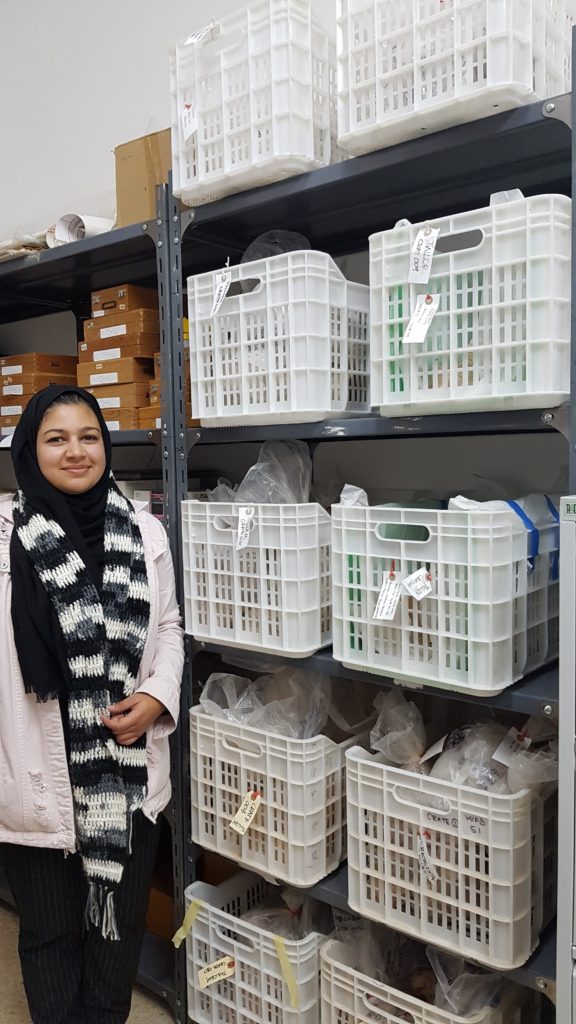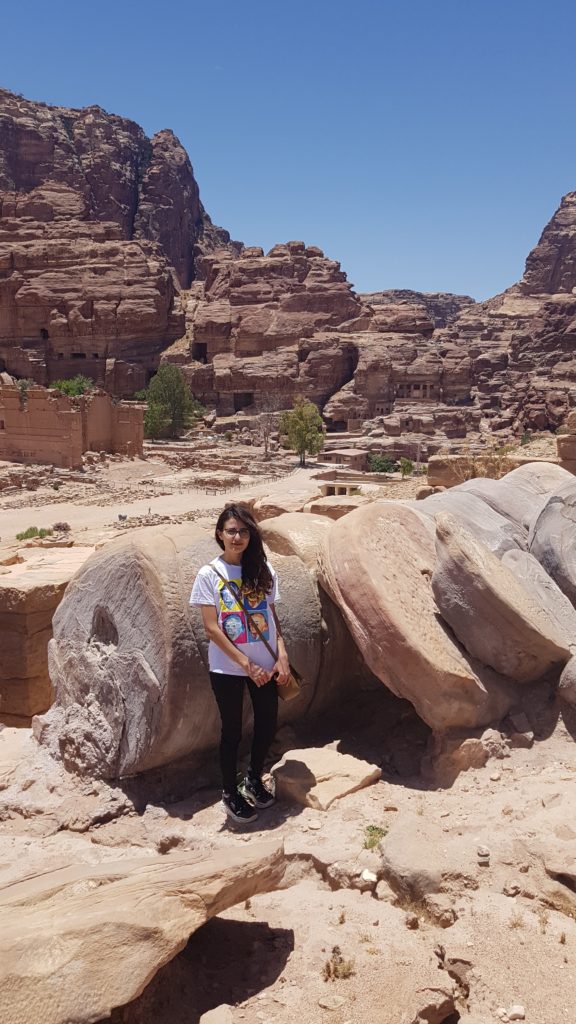With the completion of the American Expedition to Petra’s fieldwork in 2005, and with only two of Philip C. Hammond’s intended five volumes published at the time of his death in 2008, significant elements from the Temple of the Winged Lions remain inaccessible to researchers. Following the physical transfer of the Philip C. Hammond/AEP Archive to ACOR in Amman in 2010 by his widow, Lin Hammond, considerable efforts have been undertaken to digitize and organize the archival material and process artifacts and site documentation from the TWLCRM Initiative to prepare for final publication. These include digitization efforts carried out between 2012 and 2015 by Chris Tuttle and Tali Erickson-Gini, who also carried out a study of area I Nabataean houses immediately adjacent to the Temple of the Winged Lions excavated by the American Expedition to Petra in the 1970s.
Preparations toward the final publication of the Temple of the Winged Lions are supported in part by ACOR’s Publication Fund, leading to the contributions of TWL Publication Fellows Pauline Piraud-Fournet, 2019–2020, and Marco Dehner for 2020–2021. Piraud-Fournet has conducted a bibliographical study of the AEP and TWLCRM and a collation of the digital archives. This has contributed to an understanding of the state of research on the site to date and a reassessment of Hammond’s interpretations. Dehner is focused on preparing relevant sections of the final report related to decorated stone uncovered by the AEP and TWLCRM Initiative as well as the lapidaria of the Temple of the Winged Lions, and he is assisting in the preparation of the final report.
TWL Publication Project interns Safa’ Joudeh (2018–2019) and Nora Al-Omari (2019–2020), among others, have helped to document hundreds of fragmentary objects and materials sifted from spoil heaps between 2012 to 2018 and helped to digitize and organize the physical objects and archives. An ongoing assessment of artifacts and a study of the temple’s architecture are leading to a fuller understanding of religious and daily life activities, alongside the history of excavations and conservation of the site.
The American Center’s involvement with the Temple of the Winged Lions (TWL) in Petra began in 2009 with efforts to document and conserve the site and prepare for its final publication. Research and writing of this volume are now underway with support from the National Endowment for the Humanities, which, in September 2021, awarded a
significant manuscript-preparation grant to now former associate director John D. M. Green, executive director Pearce Paul Creasman, and grants support and publications specialist Noreen Doyle.

Besides giving overviews of the American Expedition to Petra excavations and the efforts of the Temple of the Winged Lions Cultural Resource Management Initiative, the contributors will present material that is currently unpublished or only partly published. Chapters will be devoted to stone elements, plaster and stucco, pottery vessels, terracotta figurines, lamps, coins, statue fragments, inscriptions, ornaments, ostraca, graffiti, and objects of metal, stone, glass, bone, and ivory, and there will be much needed detailed architectural drawings and study of the temple’s decorative scheme.
The volume is planned to address key research questions:
How was ritual space used at the Temple of the Winged Lions, how did it change over time, and how might this compare with other ritual sites in the Nabataean world and beyond? How might cultural hybridity be manifested across the Temple of the Winged Lions complex through a variety of forms of visual representation at varying scales— from monumental to micro? What was the economic role of the temple, and how did it change during an era of imperial and colonial impact? Understanding of the temple is vital to the understanding of not only Nabataean and Roman Petra but also the wider Middle East and eastern Mediterranean.
Next up | 5. Support for the Temple of the Winged Lions
See also:
1. Petra’s Temple of the Winged Lions: Introduction, 2. Excavations: The American Expedition to Petra, and beyond, 3. The Temple of the Winged Lions Cultural Resource Management (TWLCRM) Initiative, 6. Find out more about the Temple of the Winged Lions





